Abstract
This study was part of a continuing effort to define the health profile of a city-county workhouse inmate population. To supplement data previously obtained on the health status of inmates on admission, all subsequent encounters for medical problems were recorded and analyzed. Of 491 inmates examined on admission, 312 subsequently made 1,257 visit for medical care. The rate of clinic use was two to three times higher than rates reported in national surveys. Of 1,549 problem encounters, trauma, musculoskeletal complaints, skin disorders, and diseases of the eyes, ears, nose, and throat accounted for 52.3 percent. Dental disease, trauma, and other musculoskeletal disorders comprised 66.3 percent of problems that required referral of patients to the city-county hospital. A significant relationship was seen between depression as determined by a self-rating questionnaire and numbers of visits and problem encounters, as well as several frequently encountered problems. The results of this study have implications for health services in correctional institutions with similar inmate populations. The provision of limited but onsite dental services is advisable. Athletic activities and work details should be closely supervised. Physicians and nurses should be skilled in the evaluation and management of minor trauma and other musculoskeletal disorders. Algorithms are appropriate aids in the management of common but minor medical problems. These measures and proposals are designed also to deal with the problem of overuse of clinic services. However, the measures do not diminish and, in some instances, they increase access to care for medical and dental health needs.
Full text
PDF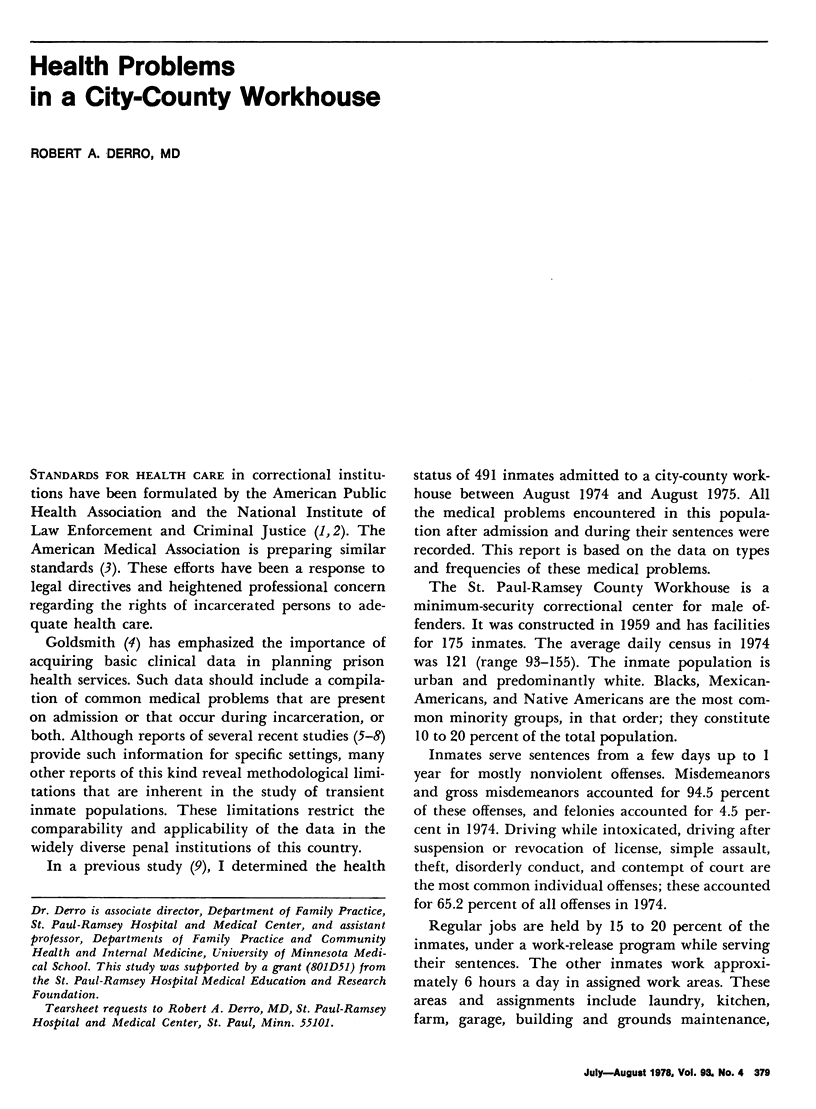
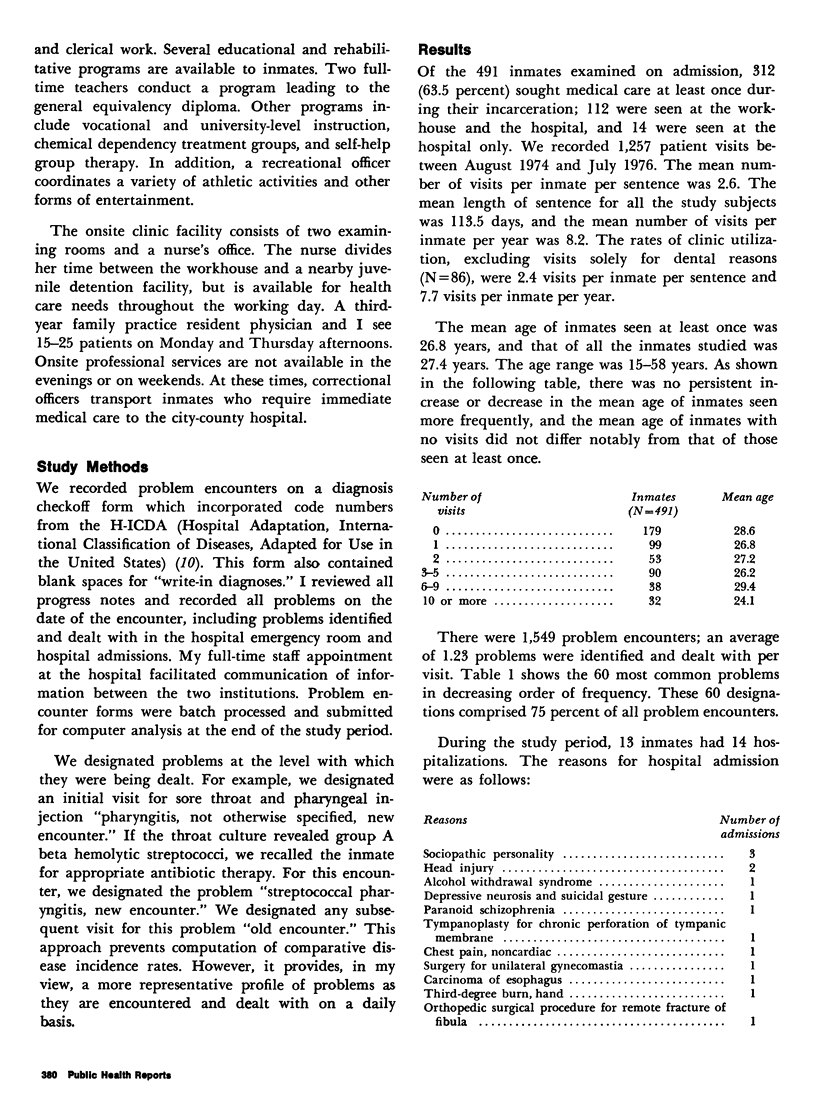
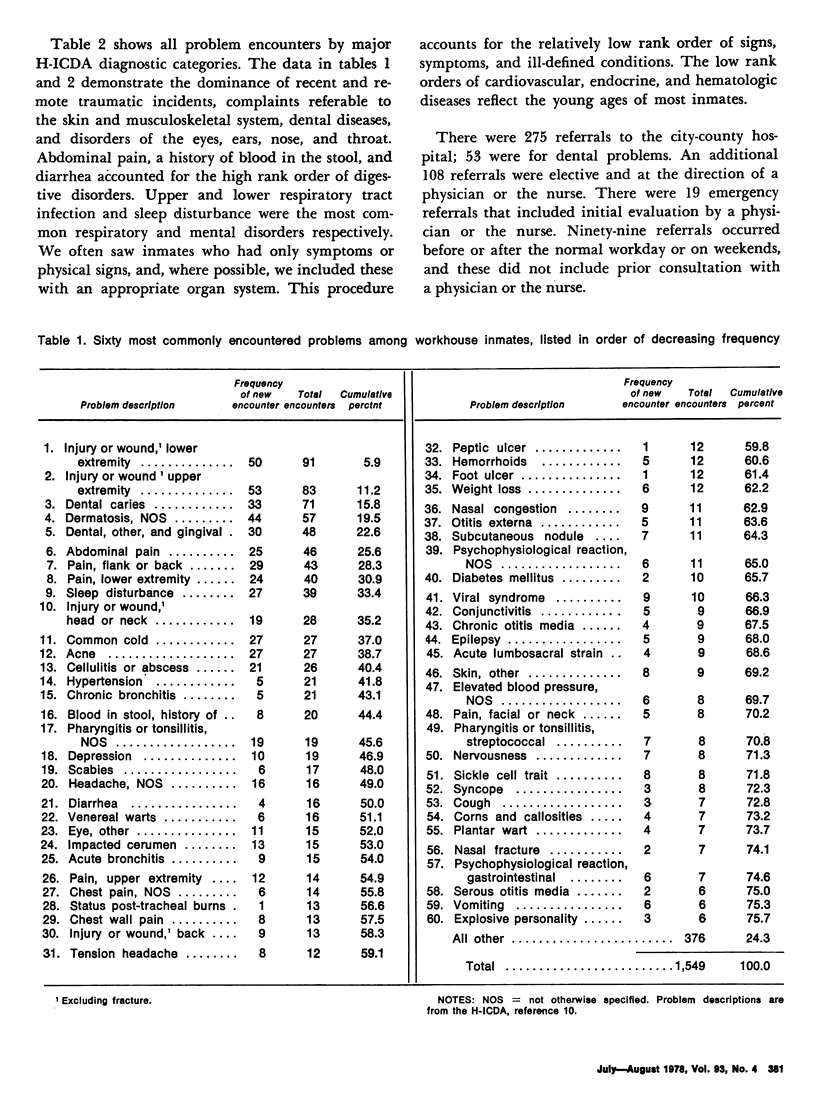
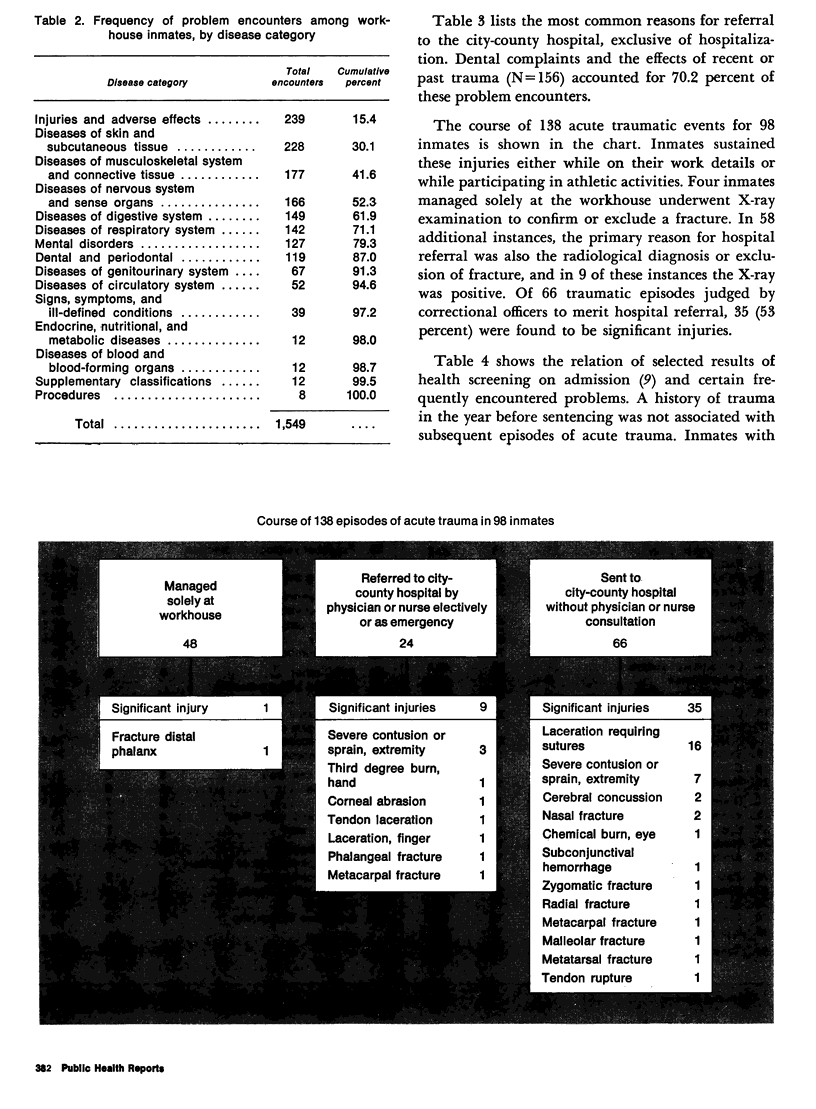
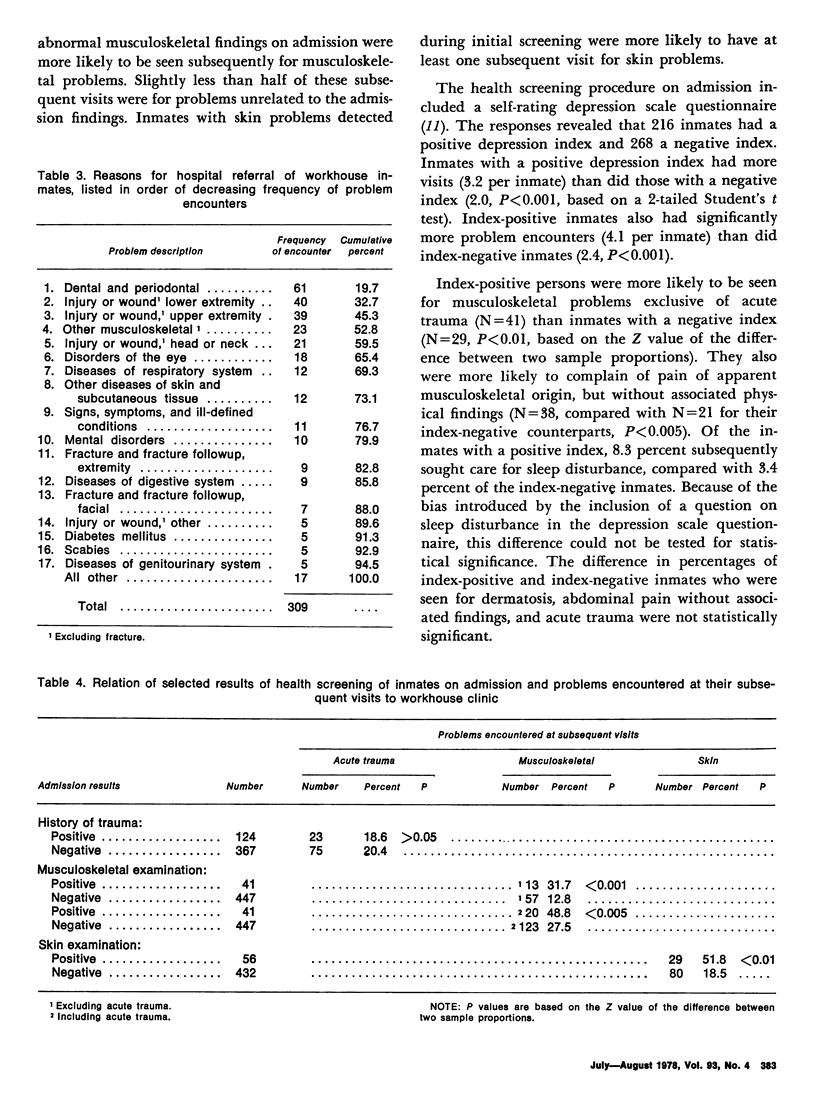
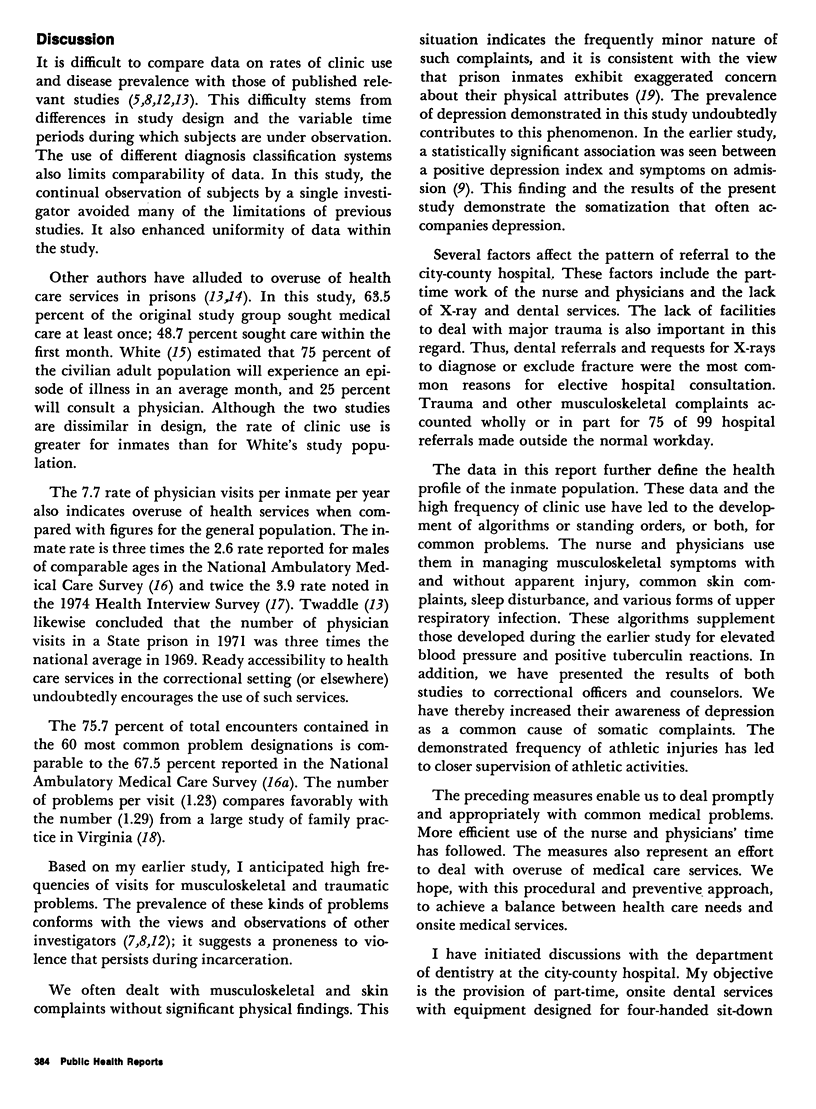
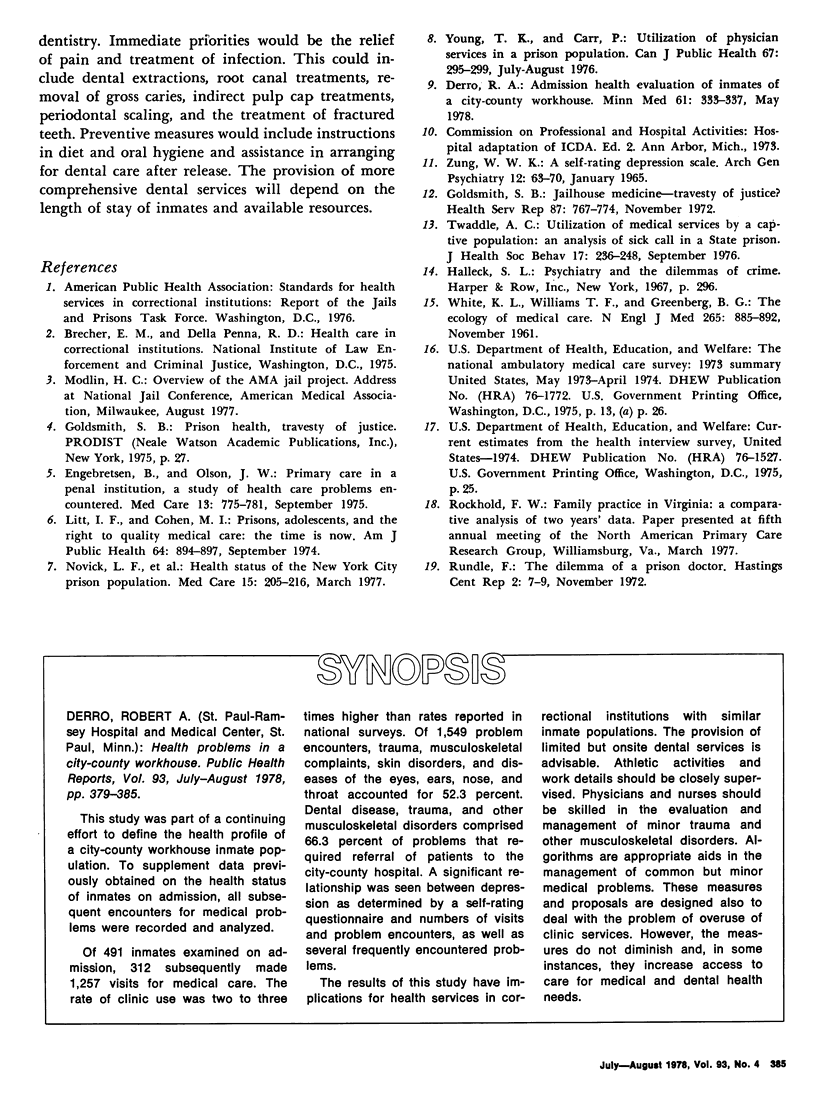
Selected References
These references are in PubMed. This may not be the complete list of references from this article.
- Derro R. A. Admission health evaluation of inmates of a city-county workhouse. Minn Med. 1978 May;61(5):333–337. [PubMed] [Google Scholar]
- Engebretsen B., Olson J. W. Primary care in a penal institution. A study of health care problems encountered. Med Care. 1975 Sep;13(9):775–781. doi: 10.1097/00005650-197509000-00007. [DOI] [PubMed] [Google Scholar]
- Goldsmith S. B. Jailhouse medicine--travesty of justice? Health Serv Rep. 1972 Nov;87(9):767–774. [PMC free article] [PubMed] [Google Scholar]
- Litt I. F., Cohen M. I. Prisons, adolescents, and the right to quality medical care: the time is now. Am J Public Health. 1974 Sep;64(9):894–897. doi: 10.2105/ajph.64.9.894. [DOI] [PMC free article] [PubMed] [Google Scholar]
- Novick L. F., Penna R. D., Schwartz M. S., Remmlinger E., Loewenstein R. Health status of the New York City prison population. Med Care. 1977 Mar;15(3):205–216. doi: 10.1097/00005650-197703000-00002. [DOI] [PubMed] [Google Scholar]
- Twaddle A. C. Utilization of medical services by a captive population: an analysis of sick call in a state prison. J Health Soc Behav. 1976 Sep;17(3):236–248. [PubMed] [Google Scholar]
- WHITE K. L., WILLIAMS T. F., GREENBERG B. G. The ecology of medical care. N Engl J Med. 1961 Nov 2;265:885–892. doi: 10.1056/NEJM196111022651805. [DOI] [PubMed] [Google Scholar]
- Young T. K., Carr P. Utilization of physician services in a prison population. Can J Public Health. 1976 Jul-Aug;67(4):295–299. [PubMed] [Google Scholar]
- ZUNG W. W. A SELF-RATING DEPRESSION SCALE. Arch Gen Psychiatry. 1965 Jan;12:63–70. doi: 10.1001/archpsyc.1965.01720310065008. [DOI] [PubMed] [Google Scholar]


